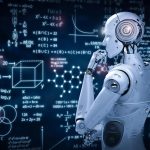Artificial Intelligence (AI) is no longer just a concept in science fiction—it’s a driving force behind modern technological advancements. From virtual assistants like Siri and Alexa to self-driving cars and healthcare diagnostics, AI has permeated every aspect of our lives. This article explores how AI works, its various applications, and the future trends that AI learners should be aware of.
Understanding the Basics of AI
Artificial Intelligence refers to the simulation of human intelligence in machines programmed to think and learn like humans. It includes various subfields like machine learning, deep learning, natural language processing, and robotics. Some key concepts include:
- Machine Learning (ML): A subset of AI that focuses on teaching machines to learn from data and improve over time without being explicitly programmed. ML can be further divided into supervised, unsupervised, and reinforcement learning.
- Deep Learning: A branch of ML that uses neural networks with many layers (deep networks) to analyze complex patterns in data. It’s particularly useful in image and speech recognition.
- Natural Language Processing (NLP): A field of AI focused on the interaction between computers and human language, enabling machines to understand, interpret, and generate human language.
- Robotics: The branch of AI that deals with designing and programming robots to perform tasks autonomously, often used in manufacturing, healthcare, and service industries.
Key Applications of AI
AI is used in a variety of fields to improve efficiency, reduce costs, and solve complex problems that would be difficult for humans to address manually. Some notable applications include:
- Healthcare: AI algorithms are used in diagnostic tools, personalized treatment plans, and drug discovery. For instance, AI can analyze medical images to detect early signs of diseases like cancer.
- Finance: AI is employed in stock trading, fraud detection, and customer service. Robo-advisors provide investment advice based on algorithms that analyze market trends.
- Automotive Industry: Self-driving cars are one of the most well-known applications of AI. These vehicles use computer vision, sensors, and deep learning models to navigate roads safely.
- E-Commerce: AI enhances customer experience by providing personalized recommendations, chatbots for customer service, and inventory management systems that predict demand.
- Education: AI is used in personalized learning platforms that adapt content to students’ learning styles and paces, making education more accessible and effective.
Challenges in Implementing AI
Despite its vast potential, AI implementation comes with challenges that must be addressed to realize its full benefits:
- Data Privacy and Security: AI systems often require massive amounts of data, raising concerns about data privacy and security. Proper measures must be taken to ensure that personal information is protected.
- Bias in AI Models: If the data used to train AI models is biased, the outcomes can be discriminatory. It’s crucial to use diverse and unbiased data to train AI systems.
- Complexity and Cost: Developing and implementing AI systems can be complex and expensive, often requiring specialized skills and computing resources.
- Ethical Considerations: As AI becomes more advanced, ethical considerations regarding the use of AI in decision-making processes, particularly in sensitive areas like law enforcement or hiring, must be carefully evaluated.
Future Trends in AI
For AI learners, staying updated on future trends is essential to remain relevant in the field. Some emerging trends include:
- Explainable AI (XAI): Explainable AI focuses on creating models that are transparent and understandable, making it easier to trust and validate AI decisions.
- AI in Edge Computing: Moving AI processing to the edge of the network, closer to data sources like IoT devices, reduces latency and enhances real-time decision-making.
- Generative AI: Generative AI models, like GANs (Generative Adversarial Networks), create new data that resembles existing data, with applications in art, music, and content creation.
- AI-Driven Cybersecurity: AI is being used to detect and respond to cyber threats in real-time, making systems more secure against sophisticated attacks.
Conclusion
Artificial Intelligence is rapidly transforming the world, making it a fascinating field for learners to explore. From understanding basic concepts to exploring advanced applications, AI offers endless opportunities for those interested in shaping the future of technology. As AI continues to evolve, staying updated on the latest trends and developments will be crucial for anyone looking to make a mark in this field.


